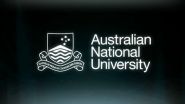(Press-News.org) Reston, Va. (December 9, 2014) - Cancer therapy can be much more effective using a new way to customize nuclear medicine treatment, researchers say in the December 2014 issue of The Journal of Nuclear Medicine. The process could also be useful for other diseases that could benefit from targeted radiation.
Targeted therapy with radiopharmaceuticals--radioactive compounds used in nuclear medicine for diagnosis or treatment--has great potential for the treatment of cancer, especially for cancer cells that have migrated from primary tumors to lymph nodes and secondary organs such as bone marrow. These disseminated tumor cells can be difficult to treat with a single targeting agent because there are dramatic differences in the number of targetable receptors on each cell.
In the study, breast cancer cells were treated with different concentrations of a cocktail of four fluorochrome-conjugated monoclonal antibodies. The amount of each antibody bound to each cell was determined using flow cytometry. Formulas were developed to "arm" the antibodies with the desired radionuclide and activity, calculate the absorbed dose to each cell, and perform a simulation of the surviving fraction of cells after exposure to cocktails of different antibody combinations. Simulations were performed for three alpha-particle emitters.
"Our approach moves radiation treatment planning for cancer therapy from the tumor level to the molecular and cellular level, with nuclear medicine serving as the treatment engine," stated Roger Howell, Ph.D., lead researcher. "The concepts are not restricted to cancer therapy but can be applied more widely to other diseases that may benefit from a targeted approach with cocktails of radiopharmaceuticals. The approach can also be extended to cocktails consisting of radiopharmaceuticals and non-radioactive agents."
The effect of the radiopharmaceutical cocktails was compared to that of single antibodies. In certain activities, cocktails outperformed single antibodies by a factor of up to 244. These findings suggest that targeted alpha therapy can be improved with customized radiolabeled antibody cocktails. Depending on the antibody combination and specific activity of the radiolabeled antibodies, cocktails can provide a substantial advantage in tumor cell killing. The methodology used in this analysis provides a foundation for pretreatment prediction of tumor cell survival in the context of personalized cancer therapy.
"This method is preferable, as it accounts for behavior of the drugs in the patient's body," Howell continues. "The beauty of either approach for planning a treatment is that the patient is not subjected to any radiopharmaceutical injections during the planning phase, which uses only fluorescent-labeled drugs. The patient is not injected with radiopharmaceuticals until the treatment phase, whereupon only a cocktail specifically optimized for that individual is administered. This spares the patient from receiving ineffective cocktails that may damage normal tissues and prevent further treatment."
INFORMATION:
Authors of the article "The Advantage of Antibody Cocktails for Targeted Alpha Therapy Depends on Specific Activity" include Jordan B. Pasternack, Jason D. Domogauer, Alisha Khullar, and Roger W. Howell, New Jersey Medical School Cancer Center, Rutgers, State University of New Jersey, Newark, NJ; and John M. Akudugu, Stellensbosch University, Tygerberg, South Africa.
Please visit the SNMMI Media Center to view the PDF of the study, including images, and more information about molecular imaging and personalized medicine. To schedule an interview with the researchers, please contact Kimberly Brown at (703) 652-6773 or kbrown@snmmi.org. Current and past issues of The Journal of Nuclear Medicine can be found online at http://jnm.snmjournals.org.
About the Society of Nuclear Medicine and Molecular Imaging
The Society of Nuclear Medicine and Molecular Imaging (SNMMI) is an international scientific and medical organization dedicated to raising public awareness about nuclear medicine and molecular imaging, a vital element of today's medical practice that adds an additional dimension to diagnosis, changing the way common and devastating diseases are understood and treated and helping provide patients with the best health care possible.
SNMMI's more than 18,000 members set the standard for molecular imaging and nuclear medicine practice by creating guidelines, sharing information through journals and meetings and leading advocacy on key issues that affect molecular imaging and therapy research and practice. For more information, visit http://www.snmmi.org.
PROVIDENCE, R.I. [Brown University] -- Maybe distraction is not always the enemy of learning. It turns out in surprising Brown University psychology research that inconsistent distraction is the real problem. As long as our attention is as divided when we have to recall a motor skill as it was when we learned it, we'll do just fine, according to the new study.
Most learned motor tasks -- driving, playing sports or music, even walking again after injury -- occur with other things going on. Given the messiness of our existence, said lead researcher Joo-Hyun Song, assistant ...
This news release is available in German.
Not all boreholes are the same. Scientists of the Karlsruhe Institute of Technology (KIT) used mobile measurement equipment to analyze gaseous compounds emitted by the extraction of oil and natural gas in the USA. For the first time, organic pollutants emitted during a fracking process were measured at a high temporal resolution. The highest values measured exceeded typical mean values in urban air by a factor of one thousand, as was reported in ACP journal.
(DOI 10.5194/acp-14-10977-2014)
Emission of trace gases by ...
TORONTO - Dec. 9, 2014 (Toronto) - Scientists at the Centre for Addiction and Mental Health (CAMH) have identified a novel drug target that could lead to the development of better antipsychotic medications.
Dr. Fang Liu, Senior Scientist in CAMH's Campbell Family Mental Health Research Institute and Professor in the Department of Psychiatry, University of Toronto, and her team published their results online in the journal Neuron.
Current treatment for patients with schizophrenia involves taking medications that block or interfere with the action of the neurotransmitter ...
Hummingbirds rely on their ability to hover in order to feed off the nectar of flowers.
It's an incredible feat of flying requiring mind boggling visual processing power, but two University of British Columbia researchers found a glitch in the system, something the tiny birds are powerless to control.
The researchers put hovering hummingbirds through a virtual reality experiment that showed the birds can't control their inflight response to some visual stimuli.
In a laboratory flight arena, hummingbirds hovered around a plastic feeder while images were projected on ...
As solar panels become less expensive and capable of generating more power, solar energy is becoming a more commercially viable alternative source of electricity. However, the photovoltaic cells now used to turn sunlight into electricity can only absorb and use a small fraction of that light, and that means a significant amount of solar energy goes untapped.
A new technology created by researchers from Caltech, and described in a paper published online in the October 30 issue of Science Express, represents a first step toward harnessing that lost energy.
Sunlight is ...
An international team of scientists has discovered the earliest known engravings from human ancestors on a 400,000 year-old fossilised shell from Java.
The discovery is the earliest known example of ancient humans deliberately creating pattern.
"It rewrites human history," said Dr Stephen Munro from School of Archaeology and Anthropology at The Australian National University (ANU).
"This is the first time we have found evidence for Homo erectus behaving this way," he said.
The newly discovered engravings resemble the previously oldest-known engravings, which are ...
Animals that regulate their body temperature through the external environment may be resilient to some climate change but not keep pace with rapid change leading to potentially disastrous outcomes for biodiversity.
A study by the University of Sydney and University of Queensland showed many animals can modify the function of their cells and organs to compensate for changes in the climate and have done so in the past, but the researchers warn that the current rate of climate change will outpace animals' capacity for compensation (or acclimation).
The research has just ...
SAN ANTONIO -- Use of anthracycline-based chemotherapy, a common treatment for breast cancer, has negligible cardiac toxicity in women whose tumors have BRCA1/2 mutations -- despite preclinical evidence that such treatment can damage the heart.
The findings, to be presented at the 2014 San Antonio Breast Cancer Symposium (SABCS), represent a unique effort between cardiologists and oncologists at Georgetown Lombardi Comprehensive Cancer Center and MedStar Heart & Vascular Institute in Washington to answer a vital clinical question.
"Our study was prompted by evidence from ...
SALT LAKE CITY, Utah, Dec. 9, 2014 - Myriad Genetics, Inc. (NASDAQ: MYGN) today announced results from a new study that demonstrated the ability of the myRisk™ Hereditary Cancer test to detect 105 percent more mutations in cancer causing genes than conventional BRCA testing alone. The Company also presented two key studies in triple negative breast cancer (TNBC) that show the myChoice™ HRD test accurately predicted response to platinum-based therapy in patients with early-stage TNBC and that the BRACAnalysis® molecular diagnostic test significantly predicted ...
BLOOMINGTON, Ind. -- It's widely known that the Earth's average temperature has been rising. But research by an Indiana University geographer and colleagues finds that spatial patterns of extreme temperature anomalies -- readings well above or below the mean -- are warming even faster than the overall average.
And trends in extreme heat and cold are important, said Scott M. Robeson, professor of geography in the College of Arts and Sciences at IU Bloomington. They have an outsized impact on water supplies, agricultural productivity and other factors related to human health ...



